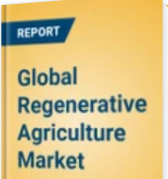Regenerative Agriculture Market 2022

Regenerative Agriculture Market 2022
Full title, Regenerative Agriculture Market, By Practice (Aquaculture, Agroecology, Agroforestry, Biochar, Holistic Planned Grazing, Pasture Cropping, Silvopasture, Others), By Application (Carbon Sequestration, Nutrient Cycling, Biodiversity), and By Region Forecast to 2028, May 2022
"The global regenerative agriculture market size was significantly robust in 2020 and is expected to register a steady revenue CAGR over the forecast period. Key factors driving market revenue growth are increasing adoption of regenerative farming, availability of technologically advanced agricultural tools and equipment, and increasing investments in research & development projects.
Regenerative agriculture is a rehabilitation and conservational approach to food and farming systems that focuses on improving water cycle, restoring top soil, increasing biodiversity, raising nutritional value, and strengthening vitality and health of farm soil. It is a holistic approach to farming that focuses on restoring soils which have been degraded by overuse and excessive use of artificial fertilizers and pesticides. Regenerative agriculture aims to alleviate the adverse consequences of farming including desertification, salinization, decarbonization, and erosion among others by rebuilding organic matter in the soil using grazing and farming techniques.
The agriculture industry is rapidly growing from the recent past. Many farmers across the globe are adopting advanced farming techniques due to rising concerns about depleting conditions of water, soil, and air, increasing greenhouse gas emissions, rising demand for high-quality food, and improving quality of the soil and organic matter in the soil. No-till farming, livestock rotation, crop rotation, agroforestry, agroecology are some of the commonly used techniques in regenerative agriculture, which play major role in sustainable food production. Regenerative agriculture helps in increasing soil biodiversity resulting in resilient soil, capable of withstanding climate change impacts such as drought and flooding."
